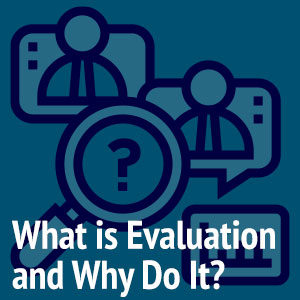 What is an “Outcome”
What is an “Outcome”
“Outcomes,” i.e., specific changes or results, are what programs seek to produce, and what funders seek to fund. Programs and initiatives, especially in the nonprofit sector, exist to produce valuable and desired changes. While the measurement of outcomes is essential to evaluation, a key question for both programs and for evaluators is, ‘What counts as a desired outcome?”
Typically, education and nonprofit programs strive to see improvements in things like’s students’ reading scores, homeless persons employability, young people’s job-readiness, availability of affordable housing for home-seekers, etc. While the desirability of such outcomes appear “natural” or taken-for-granted, outcomes are, in fact, “agreed upon” events, states, or entities.
Who determines the outcomes that are to be evaluated?
For those who administer and run programs, it is often the case that such programs are highly dependent upon what funders value and desire to see changed. Although desired changes are usually viewed as self-evident, outcomes are a socially and politically defined entity. They depend upon a negotiated understanding of what constitutes a valuable change, and how such change should be measured or indicated. Additionally, as many program leaders and educators will attest, changes that are desirable, are often shaped by the ability of proponents and researchers to measure such changes. (I’m reminded here, of Einstein’s famous quote: “Not everything that counts can be measured, and not everything that can be measured counts.”) As Heather Douglas points out, “ We must value something to find it significant enough to measure, to pluck it from the complexity of human social life, and to see it as a set of phenomena worthy of study.” (See Heather Douglas, “Facts, Values, and Objectivity”).
Of course, funders alone don’t determine the outcomes that programs produce. Program stakeholders can have a significant influence on what constitutes a desired outcome (See our previous blogpost, “The Importance of Understanding Stakeholders”). In an educational program, for example, a wide range of stakeholders may influence the desired outcomes of programming. Parents, teachers, community members, state and federal policy makers, business interests, politicians—may all influence what counts as a desirable outcome of education. Therefore, what stakeholders value (i.e., view as significant), is often what is viewed as the desired outcome of a program.
It’s important for program leaders and staff, and for evaluators to discuss and identify which changes programming seeks to affect. While evaluators deploy a range of methods to indicate or measure such changes, what counts as a desirable change, as a desirable “outcome,” is a question as critical to the success an evaluation as it is to the success of a program.
Resources:
The Measure of Reality: Quantification and Western Society 1250-1600, Alfred W. Crosby. Cambridge University Press, 1997.
What is Quantification Research?
For a radical critique on the power of the funders of nonprofits to exercise influence on nonprofits goals and outcomes, see “How Liberal Nonprofits Are Failing Those They’re Supposed To Protect,” by William Anderson
Heather Douglas, “Facts, Values, and Objectivity”
MIT Teaching and Learning Lab, on Student Outcomes
For a summary of the possibility of “value neutrality” in the social sciences



